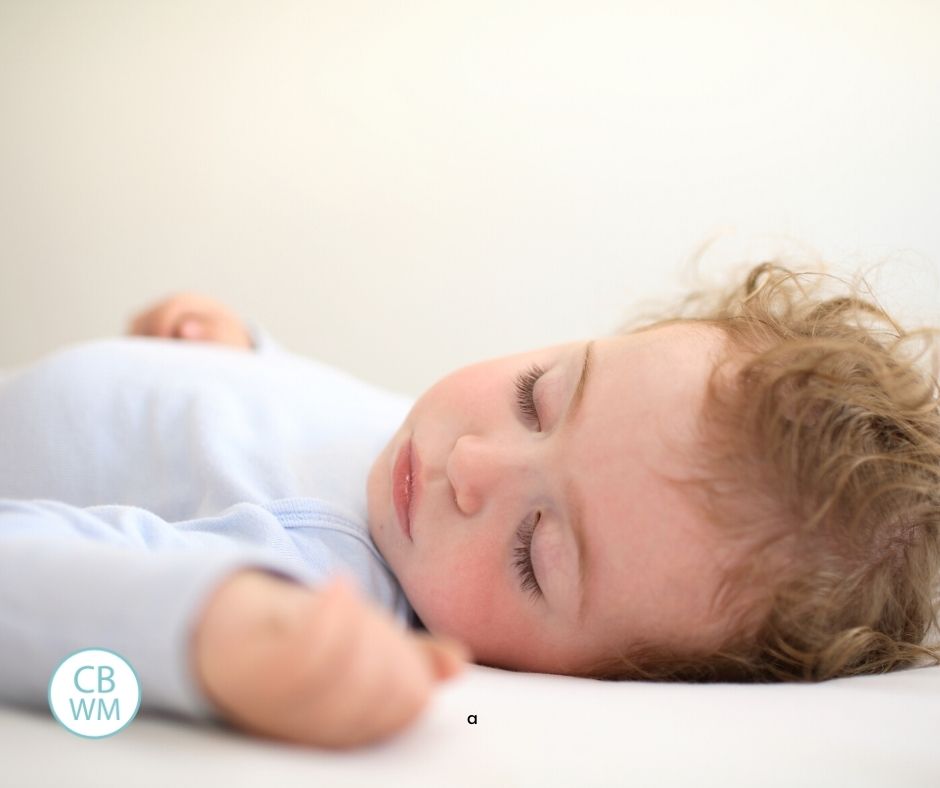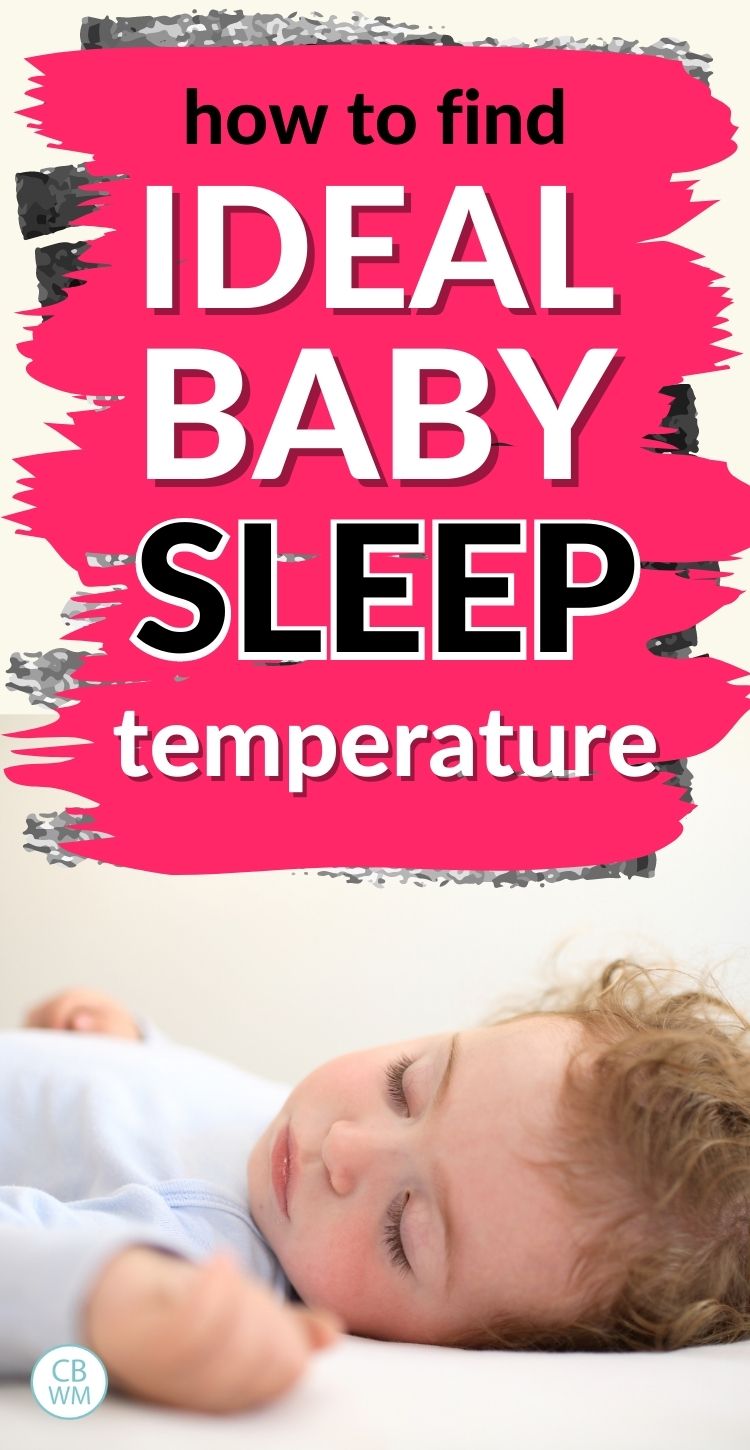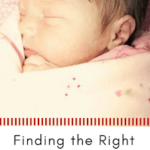The ideal temperature can lead to solid sleep for your baby, toddler, and child. Learn what temperature range is best and how to find ideal for your kiddo.

Finding the ideal room temperature for your child’s sleep is easier said than done. It isn’t necessarily difficult, but it does take some trial and error.
This process can be made easier when you understand what is typical for the average child.
Post Contents
What is the Best Room Temperature for Sleep
It seems most sleep experts agree somewhere between 65-70 degrees is best (though some go as low as 60 and high as 75).
That really is a wide range, though. 60 feels very different than 75.
How do you tell what is best for your individual child? This is where the power of observation comes into play. You have your range to work with, now experiment and see what works best for your individual baby.
Take notes of the temperature as well as how you dress baby in that temperature.
How you are dressed while sleeping will change the temperature you can handle.
Your baby will also change depending on the age. Younger babies cannot regulate their own temperature as well as older babies and toddlers.
How Do You Figure Out the Best Temperature
Your baby, toddler, or child will probably want to sleep in a similar temperature to you.
Start in the ideal range listed above and experiment.
If your house is like mine, different bedrooms are different temperatures. You will need to be aware of that.
Also, you need to be aware of what your child has as a personal preference.
You will come to know as you pay attention.
I could tell Brayden liked to sleep warmer as a baby. When Kaitlyn came along, I quickly figured out she liked to be cooler (and I got many lectures from certain relatives about her lack of socks–she hated socks as a four week old and still hates socks as a four year old and I feel so vindicated as a mother!).
The best advice I can give you is to pay attention. You need to notice patterns. You might need to take notes to see these patterns, or you might be able to track it in your head. What did your child wear to sleep in? What blankets, if any, were involved? What was the temperature in the room?
And with that information, how did your child sleep that night?
How to Tell if Baby is Too Hot
There are some physical signs of overheating that will let you know your baby is probably too hot.
- Baby’s back of the neck is sweaty
- Baby is flushed (cheeks are flushed)
- Baby is irritable
- Baby’s chest or ears are hot
- Baby has rapid breathing
If baby is too warm, avoid overheating by dressing baby in less clothing for sleep. You can add a fan to baby’s room (but do not point it at your child).
Dress your baby in as little as possible for sleep. You might do just a onesie or even just a diaper.
Cool the room down as much as you can before it is time to sleep. When Brayden and Kaitlyn were young, their rooms would get hot. I would crack open windows in the evening to cool the room down before bedtime. I did not feel comfortable leaving windows open in the night, but I could cool the room before it was time to sleep.
How to Tell if Baby is Too Cold
There are also some physical signs that baby is too cold:
- Baby’s hands and feet are slightly blue
- Fingers and toes are cold to the touch
- Baby shivers
If baby is too cold, try swaddling your baby for sleep. You can also try a lightweight sleep sack. Experiment and see if your baby likes to sleep with socks or not.
You can also change up the pajamas baby wears. Extra layers might be helpful. Start by adding one layer of clothing at a time.
Avoid bundling baby too much. If baby is too hot, it can be dangerous and lead to SIDS.
Also, remember you do not want pillows, blankets, or electric blankets in baby’s crib.
>>>Read: Dressing Baby for Sleeping
Look at Disposition
You can also look at your little one’s disposition to get an idea if your child might like to sleep on the warmer end or cooler end of normal.
I tend to get cold easily in the day and do not like to be cold when I sleep. My husband tends to be hot and does not like it to be warm when he sleeps.
But my kids haven’t always followed that simple pattern.
When Brayden was 6, he did not mind being cold. He was bewildered when his friends wanted to go inside after playing in the snow for two hours. Even as a pre-toddler, he did not want to wear a coat out in the brisk fall weather. He just didn’t mind it.
When Kaitlyn was 4, she did not like to be cold. Unless incredible fun was happening, she was done in the snow after 30 minutes. She especially did not like to have wind blowing on her.
As a 3 year old, McKenna was like Brayden–she did not mind the cold. She would play outside in the snow forever. Brayden was lucky to have her.
At the same ages, however, Brayden did not like to be cold when he slept. He slept in a sweatshirt, flannel pajama bottoms, and socks. He wore a child-sized snuggie that his grandmother gave him for Christmas. Then he has his sheet, a comforter, a heavy afghan, the baby quilt I made him, two fleece blankets, and a couple of small cotton blankets thrown on top. His room is kept at 70 degrees. Not kidding.
Kaitlyn at 4 years old loved to be cold when she slept. She had the coldest bedroom in the house. She slept in a flimsy nightgown meant for warm summer nights (in the winter) and hated to sleep in socks. She slept with a sheet, comforter, and a couple of fleece blankets because I think she must be freezing, not because she wants them.
McKenna at 2 years old also did not like to be cold when she sleeps. She slept in warm pajamas and socks. She had the warmest bedroom in the house. She had more blankets than I could count and she recognized if I tried to remove some. If she woke from a nap and had bare arms (because she took off her cardigan because she was “too hot” during playtime), she wakes up crying.
I share these quirks to illustrate that some children like to be warm when they sleep and others like to be on the cooler side. ALSO, it takes some observation to know what they each like–it isn’t always what you might assume.
Why is Getting the Temperature Right So Important
Finding the right temperature is important for optimal sleep. If you are too hot, you will wake more often. If you are too cold, you will wake more often.
You will also have disturbing dreams that will disrupt sleep if your temperature is off.
It isn’t just about sleep, though. For a baby, the risk of sudden infant death syndrome (SIDS) goes up if he is too hot.
While the risk of SIDS is present into toddler years, the highest risk is 0-6 months old.
“Experts agree the temperature of your sleeping area and how comfortable you feel in it affect how well and how long you snooze. Why? “When you go to sleep, your set point for body temperature — the temperature your brain is trying to achieve — goes down,” says H. Craig Heller, PhD, professor of biology at Stanford University, who wrote a chapter on temperature and sleep for a medical textbook. “Think of it as the internal thermostat.” If it’s too cold, as in Roy’s case, or too hot, the body struggles to achieve this set point.
That mild drop in body temperature induces sleep. Generally, Heller says, “if you are in a cooler [rather than too-warm] room, it is easier for that to happen.” But if the room becomes uncomfortably hot or cold, you are more likely to wake up, says Ralph Downey III, PhD, chief of sleep medicine at Loma Linda University…” (source)
Finding the perfect temperature gets tricky with the more people you add to the family. How do you find a temperature that is comfortable for everyone?
I recommend you figure out what the lowest temperature needs to be. So in our family, my husband and Kaitlyn like to sleep in a cooler environment. So the thermostat is set to a cooler temperature for those two. Even in the winter, my husband sleeps with only a sheet and a light blanket. No socks.
Then the rest of us warm sleepers adjust our environment as needed. We all wear warmer PJs and all wear socks in the winter. We all have our layers of blankets. The children have space heaters in their rooms that have a thermostat.
So in your quest for good sleep in your family, do not underestimate the importance of temperature, pajamas, and blankets. It is a vital element in getting peaceful, continuous sleep. What is perfect for you will not automatically be perfect for anyone else in the home. Work to figure out the ideal for each person and figure out how to achieve that in your home. You will all be sleeping better if you do!
Conclusion
Baby sleep will be much smoother if you get the temperature correct for your individual baby.
Related Posts

This post originally appeared on this blog March 2012

